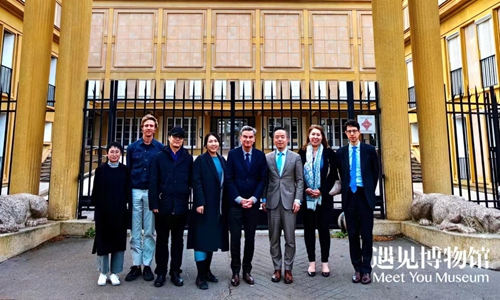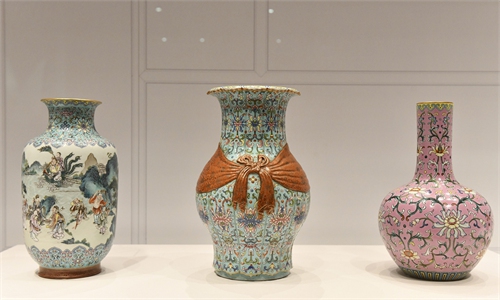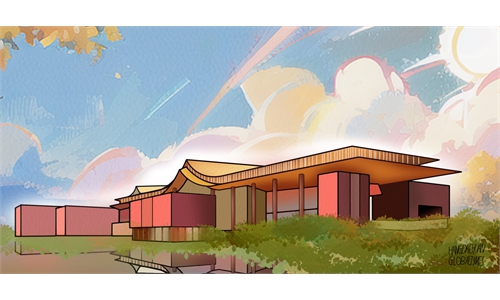ARTS / CULTURE & LEISURE
Canal museum reveals splendid civil engineering project connecting Silk Road and Maritime Silk Road
Artery of a vast land
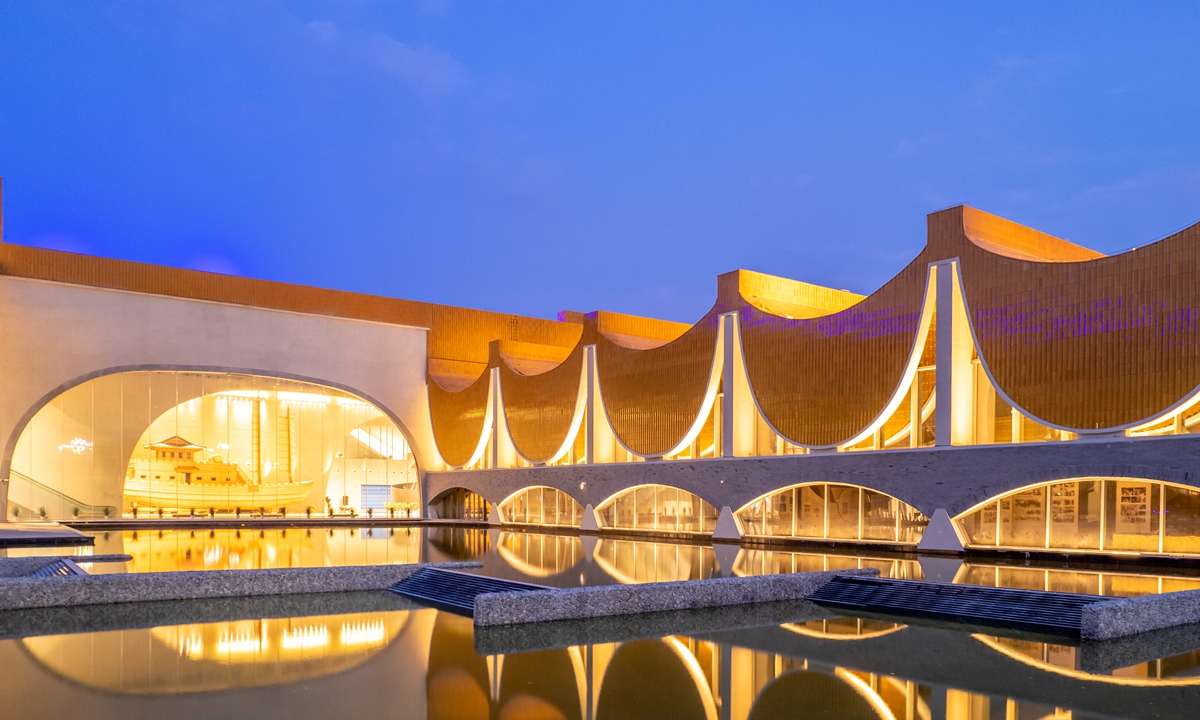
The Sui-Tang Dynasties Grand Canal Cultural Museum in Luoyang, Henan Province Photo: VCG
Editor's Note:Through the continuous efforts of several generations of Chinese scholars, major research projects, such as the Project to Trace the Origins of Chinese Civilization, have shown that Chinese history includes 1 million years of human evolution, 10,000 years of culture and more than 5,000 years of civilization.
Thousands of museums across the country, with their rich collections and exhibits, are like stars lighting up the Milky Way that is China's history.
In this series, the Global Times will introduce 10 museums from across the breadth and width of China, exploring their contributions to the country's diverse, inclusive and continuous civilization.
This seventh installment of the series brings readers to the Sui-Tang Dynasties Grand Canal Cultural Museum in Central China's Henan Province.
In 2013, a collapsed river embankment in Luoyang, Central China's Henan Province sent a huge wave of water rushing down the river, spreading all the way to the uninhabited tidal flats next to a village. The huge flow of water, however, brought two large shipwrecks into the spotlight as well as unveiled more about the history of a stunning work of civil engineering: China's Grand Canal, the world's longest man-made waterway.
The location of the two shipwrecks, later named Luoyang Canal Shipwreck No.1 and No.2, roughly overlapped with the location of the now defunct section of the Grand Canal that ran through Luoyang, one of China's eight ancient capitals.
The discovery of the shipwrecks caused an uproar of excitement among Chinese archaeologists: Even though written history has records of dozens of cargo ships sinking around the Luoyang section of the canal, which was built during the Sui Dynasty (581-618), none of them had been found before.
For archaeologists, the exciting discoveries became the most direct evidence of the prosperous transport of goods from the economic center of Jiangnan (southeastern China) to the political center of the Central Plains that took place thanks to the construction of the Grand Canal.
The two ships are now treasures on display inside the Sui-Tang Dynasties Grand Canal Cultural Museum, which opened in Luoyang in 2022.
Why do we talk about the history of the Grand Canal? What role did it play, and still plays, on this vast land?
After the disputes and divisions during the Three Kingdoms (220-280) and the Northern and Southern Dynasties (386-589), the north-south Grand Canal, centered on Luoyang in the following years, connected most of the east-west water systems in China, Huang Jie, executive vice-dean of Yangzhou University's Grand Canal Research Institute, told the Global Times in a recent interview.
"And this waterway eliminated the barriers between the political, economic and cultural centers in the north, south and Central Plains, and laid a foundation for the following great Tang Dynasty [618-907], which lasted nearly 300 years," noted Huang.
The Grand Canal's unique ecological and cultural attributes make it a special presence among the countless cultural relics in China today, as well as a focus of global attention.
"The Grand Canal not only presents China's long past, but still plays a lasting role in modern times," Huang said.
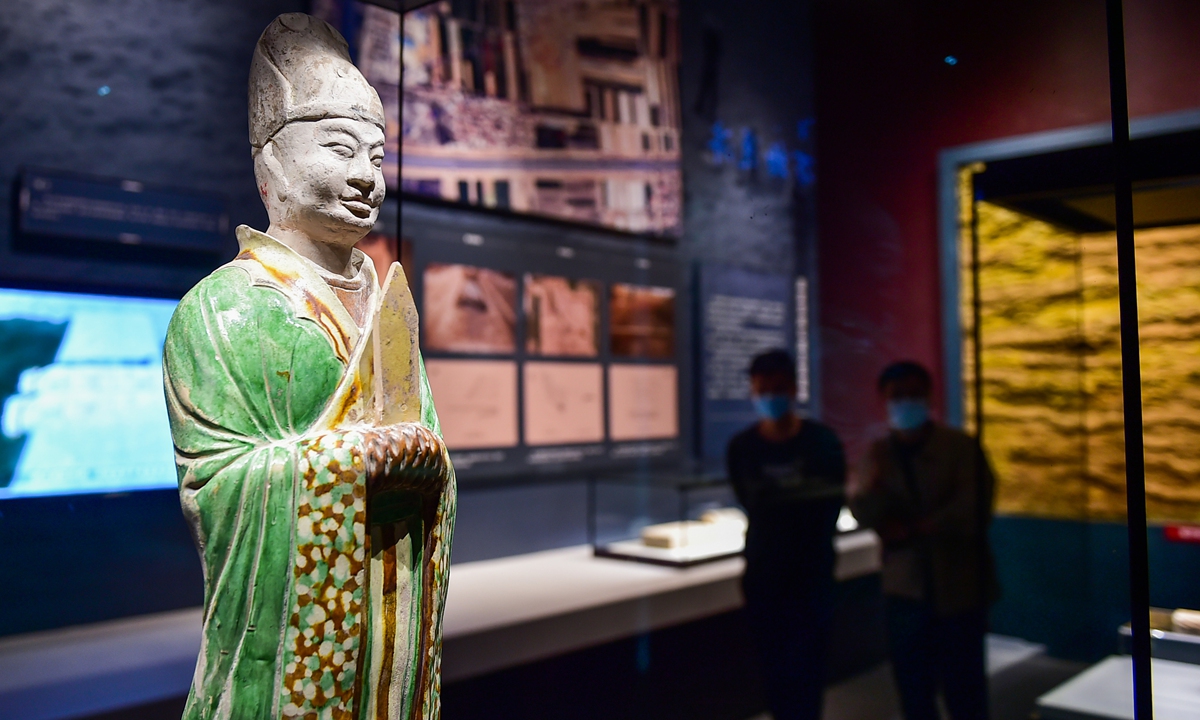
A pottery figurine at the Sui-Tang Dynasties Grand Canal Cultural Museum in Luoyang, Henan Province Photo: VCG
A time to rememberSpeaking of the Grand Canal today, it is normally referred to as Jing-Hang waterway as it runs from Hangzhou, East China's Zhejiang Province to Beijing. Few people are aware of the fact that the Jing-Hang waterway was built during the Yuan Dynasty (1279-1368) upon the original Sui-Tang Grand Canal.
The biggest difference between the two canals lie in their routes. During the reconstruction of the Jing-Hang waterway, Luoyang was cut from the route. Instead, the waterway led directly to Beijing in a straight line, since the northern city was then the economic center of China. This move cut the canal's length from 2,700 kilometers to around 1,700 kilometers.
Though it was crossed out from the list of canal cities, the importance of Luoyang as a central hub of the canal cannot be ignored: The ships on this canal recorded the exchanges between people from the north and the south, as food produced in the south was delivered to the tables of people in the Central Plains, typically Luoyang the capital, in the shortest amount of time.
On the second floor of the exhibition hall of the Sui-Tang Dynasties Grand Canal Cultural Museum, hand-painted murals of a bustling pier next to the canal gives visitor's an idea of the city's prosperity at that time.
In addition, there are Grand Canal museums respectively in Yangzhou in East China's Jiangsu Province, and Hangzhou in Zhejiang, all important cities along the canal.
Huang pointed out that just like the Great Wall, these major projects were originally built for military purposes.
"Connected national waterways allowed the central government at that time to strengthen unified governance... This north-south waterway also connected the Maritime Silk Road and the Silk Road."
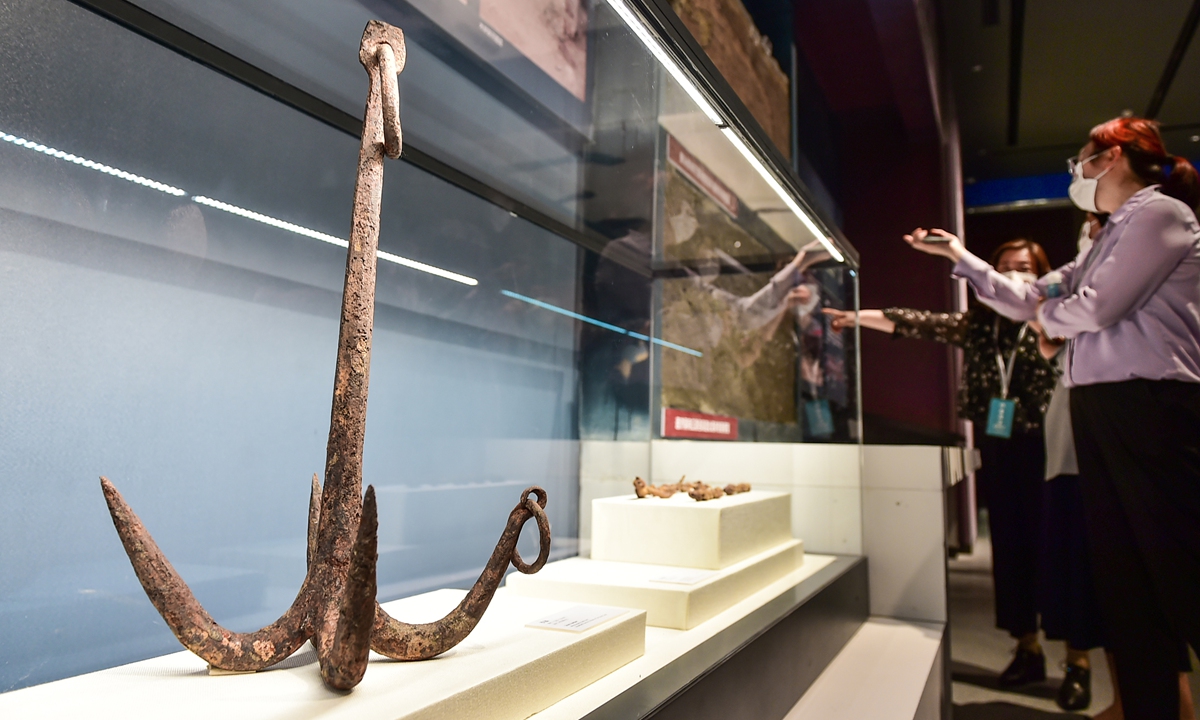
An anchor at the Sui-Tang Dynasties Grand Canal Cultural Museum in Luoyang, Henan Province Photo: IC
A modernized hot topicOn June 22, 2014, China's Grand Canal was listed as a UNESCO World Heritage Site. In the World Heritage Committee's introduction to the Grand Canal, it says that the canal not only represents the most extensive civil engineering project before the Industrial Revolution, but also continues to play an important role in today's transportation and irrigation, which helps guarantee the country's economic prosperity and social stability.
Since 2005, architects, historians, and cultural experts such as Shan Jixiang, former director of the Palace Museum, have contributed to the protection of the Grand Canal.
Nowadays the Grand Canal is closely related to China's South-to-North Water Diversion Project. In April 2022, with the contribution of this project, the Jing-Hang waterway was completely connected again for the first time in nearly a century.
"At present, there are 500 canals and more than 3,000 canal cities in the world. What we are doing now is to use canals as a link to communicate with the world, and let people understand our history through canals," said Huang.
